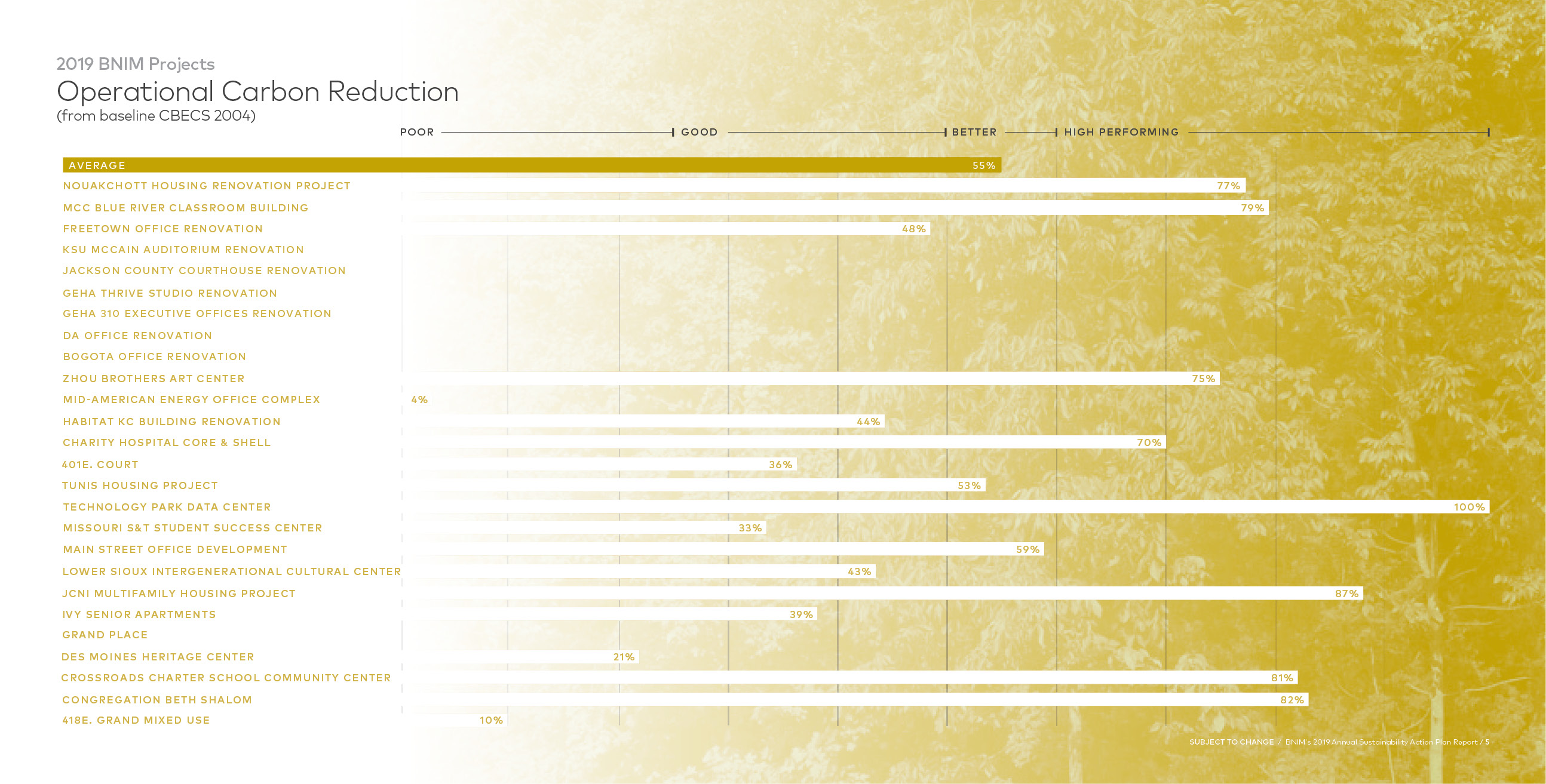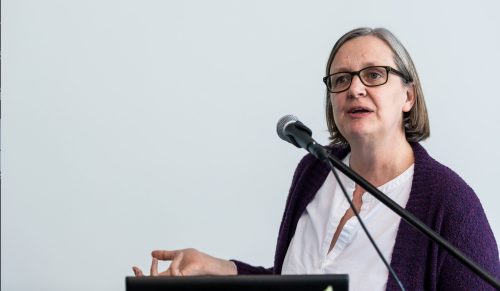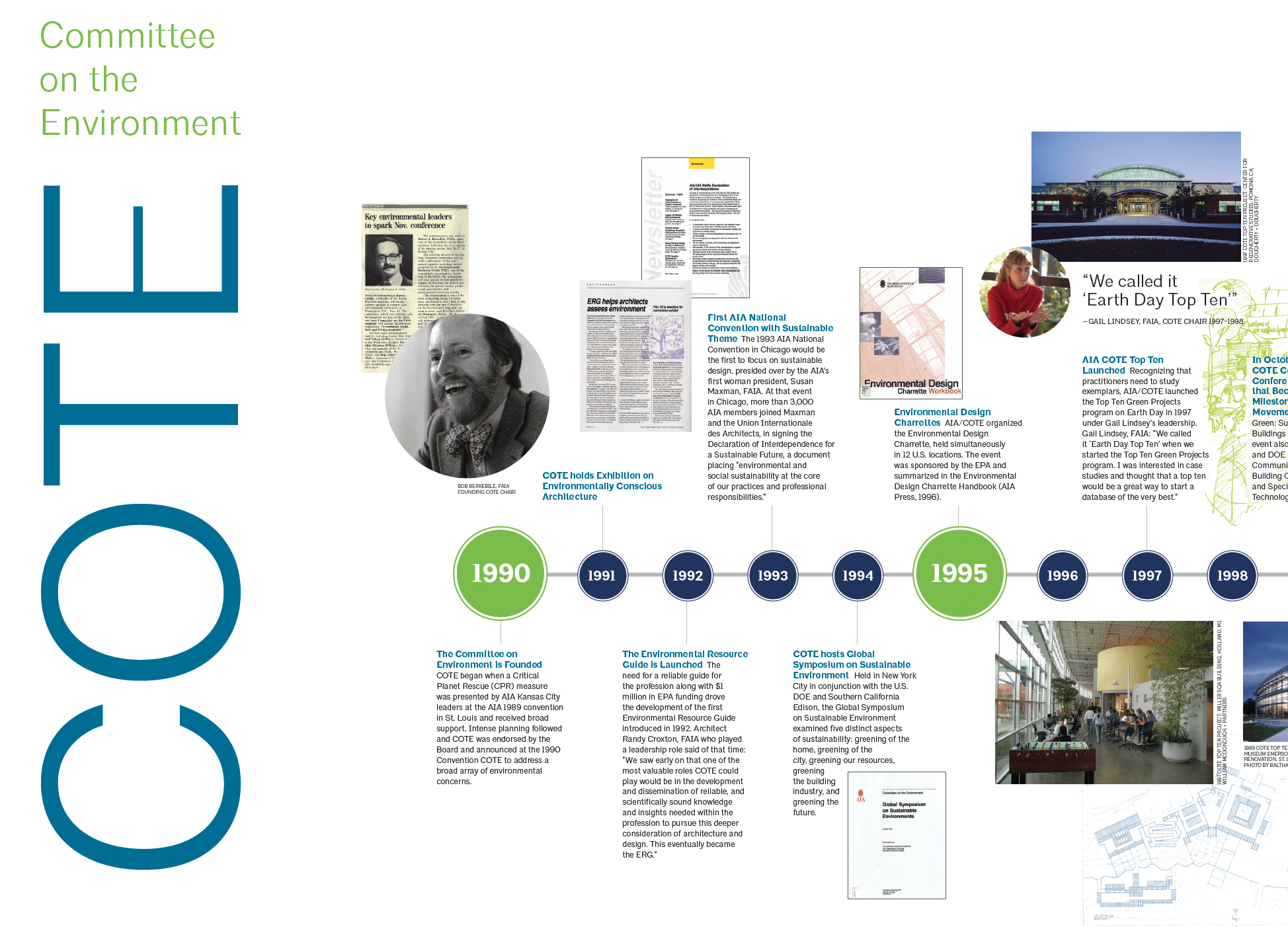
Resiliency in a Regenerative Future
The year 2020 marks the convergence of a number of milestones directly related to the most pressing challenge of our time: climate change. In 2020, as we exit the hottest decade on record, a young generation unites in the face of climate crisis; Earth Day marks its 50-year anniversary; the AIA Committee on the Environment turns 30; and, BNIM, a firm that has been a pioneer in the sustainable design movement since the late 1980s, celebrates 50 years by doubling down on its commitment to address climate action and design for the health of our shared future.
Just four months into this new decade, we suddenly find our global community navigating a surreal landscape as we contend with the COVID-19 pandemic. The unprecedented events of the last several months have changed the global mindset and shuffled priorities at macro and micro levels. Through commitment to social distancing and the unwavering determination of front-line responders, our governments, communities, businesses, institutions, and families are now beginning to consider what a post-pandemic reboot will look like.
It is through this lens that we, as a collective society and perhaps more connected than ever before by this shared experience, are presented with a meaningful question: How can we use the momentum of 2020 to move forward in ways that improve our global resiliency?
Milestone 1: 2010 – 2019 – Hottest Decade on Record

In 2020, the effects of climate change on our planet have become increasingly and alarmingly visible. As reported by NASA and the National Oceanic and Atmospheric Administration (NOAA), the last decade witnessed record of the warmest global temperatures in 140 years. Though impacts of human behavior on the environment have been closely monitored and reported for several decades, this topic has not always reached the forefront of conversation in mainstream society. But as we enter a new decade, a shift is happening. We see our society awakening to the realities of climate change, and we see a young generation beginning to unify around the growing concerns facing the future of our planet.
Milestone 2: 50th Anniversary of Earth Day
Earth Day has mobilized global awareness and collective concern for the future of our planet since 1970. According to the history of Earth Day, the idea for a nationwide day of dedication to the planet was initiated by U.S. Senator and founder of Earth Day, Gaylord Nelson, who recognized the consequences of unsustainable behaviors and the dire need to raise environmental consciousness in the population at-large. Today, with the mission of driving “transformative change for people and planet” through a global environmental movement, Earth Day has been recognized by one billion individuals across the world. On April 22, Earth Day celebrates 50 years. To mark this occasion, Earth Day 2020 is focused on taking climate action, encouraging individuals to participate in a global conversation across digital platforms with the tag #EarthDay2020.
As Gaylord Nelson said, “Our goal is not just an environment of clean air and water and scenic beauty. The objective is an environment of decency, quality and mutual respect for all other human beings and all other living creatures.”
Milestone 3: 30th Anniversary of COTE
In 1990, the AIA Committee on the Environment (COTE) was one of the first organizations in the Architecture, Engineering, and Construction (AEC) industry solely focused on addressing environmental concerns in the built environment. COTE holds a key role in informing environmental policy and advancing sustainable practice in the AEC industry. For three decades, COTE has set environmental standards through initiatives including the development of the Environmental Resource Guide, the AIA COTE Top Ten Awards, and adoption of the 2030 Challenge. This year, COTE celebrates its 30th anniversary and continues to promote sustainable practice and design excellence in the AEC industry. According to the AIA, a current initiative is to achieve and surpass the organization’s 2030 net zero energy goals.
Milestone 4: 50th Anniversary of BNIM

In 2020, Kansas City-based BNIM Architects celebrates its 50th anniversary. From the beginning of the sustainable design movement when BNIM leaders co-presented Critical Planet Rescue (CPR) to the AIA in 1989, calling for environmental change in the AEC industry, this firm has championed sustainable design in practice, research, and policy. BNIM was a key contributor in the development of the AIA COTE, U.S. Green Building Council (USGBC), the LEED rating system, and the Living Building Challenge. A pioneer in practice as well as policy, the firm’s portfolio includes benchmark projects like the Omega Center for Sustainable Living, which was the world’s first LEED Platinum certified Living Building. At their firm’s mid-century mark, the leaders at BNIM are not mired in the past, however. They are focused on the next five decades, redoubling the firm’s commitment to sustainable and regenerative design. Recent initiatives, like the firm’s 2020 Sustainability Action Plan, provide a framework of tools and resources to further this commitment to sustainability and uphold BNIM’s core purpose of enhancing the human condition.
“I really believe that the relationship between human experience and nature […] is very powerful and inextricably linked,” BNIM Principal, Laura Lesniewski said, “A key for us over the years, and even more so today is an awareness and a recognition of the existential threat of climate change. It is real, and it is in the minds of the people that work at BNIM. By addressing climate change, by necessity, our designs also reflect healthy communities.”
Each of these notable milestones represent the continued efforts that have helped shaped the sustainable movement over the past 50 years. But perhaps the greatest significance and legacy of these environmental proponents is found in the future trajectory they share. For Earth Day, COTE, BNIM, and our collective society, 2030 is looming. And the COVID-19 pandemic is a jarring reminder to us that the work has only just begun.
The architectural profession is predicted to take on a key leadership position in creating a more resilient future. With nearly 40 percent of annual carbon emissions generated by the built environment, integrating regenerative, healthy design standards into the architectural practice will play an important role in addressing climate and health issues now, more than ever. The sustainable movement has introduced a meaningful dialogue within the AEC industry that is focused on how green building design can shape positive outcomes for the prosperity of both people and planet. With sustainable, regenerative environments comes hope for healthier, more equitable, and resilient communities.
Sources
1 https://www.nasa.gov/press-release/nasa-noaa-analyses-reveal-2019-second…
2 https://www.earthday.org/history/
3 https://www.earthday.org/about-us/
4 https://www.earthday.org/campaign/earth-day-earthrise/
5 http://www.nelsonearthday.net/docs/nelson_26-18_ED_denver_speech_notes.pdf
6 https://network.aia.org/blogs/brian-mclaren/2017/12/31/cotes-mission-and…
7 https://network.aia.org/HigherLogic/System/DownloadDocumentFile.ashx?Doc…
8 https://www.aia.org/pages/3411-top-issue-sustainability
9 https://www.bnim.com/
10 https://www.bnim.com/blog/towards-regenerative-future 11 https://www.eomega.org/omega-center-for-sustainable-living 12 https://www.bnim.com/blog/bnim-s-2020-sustainability-action-plan 13 https://architecture2030.org/buildings_problem_why/



